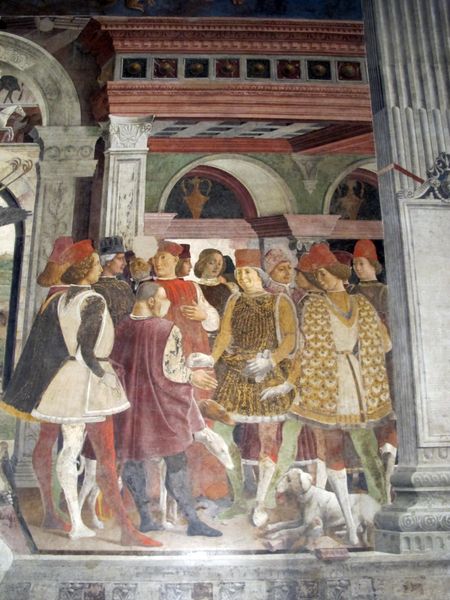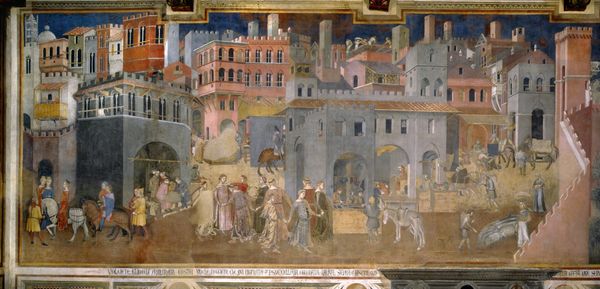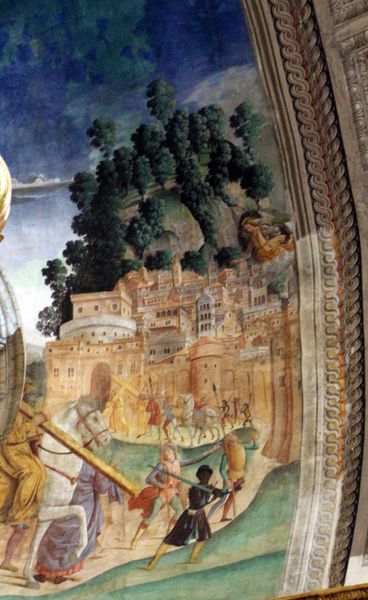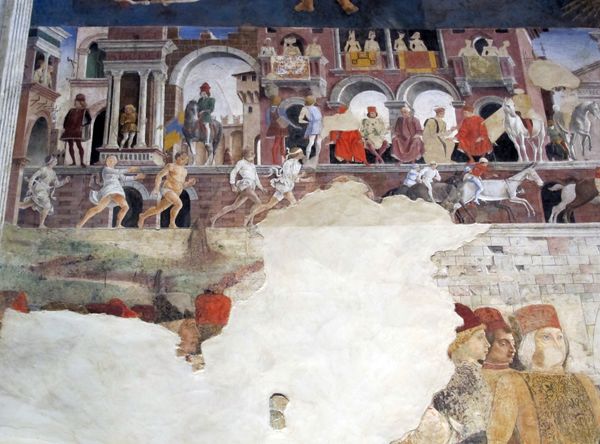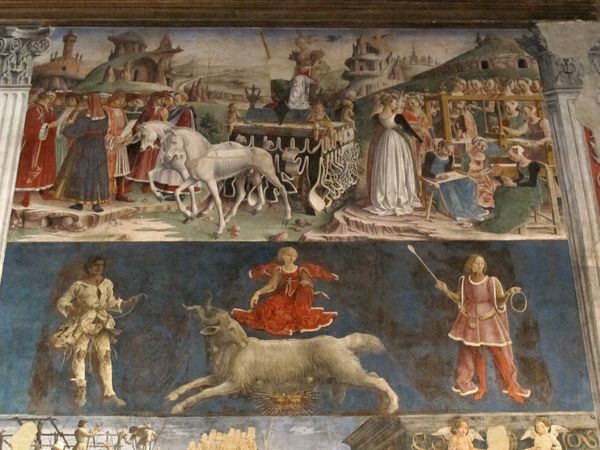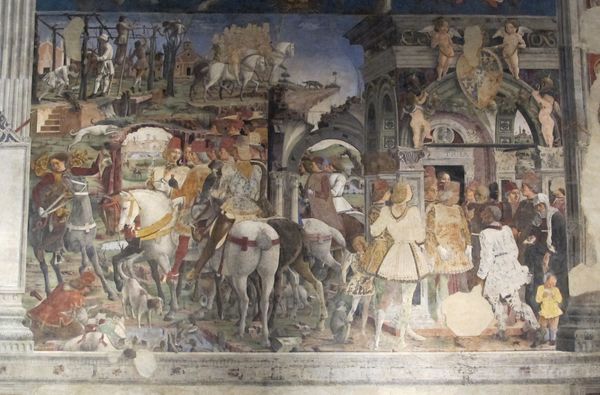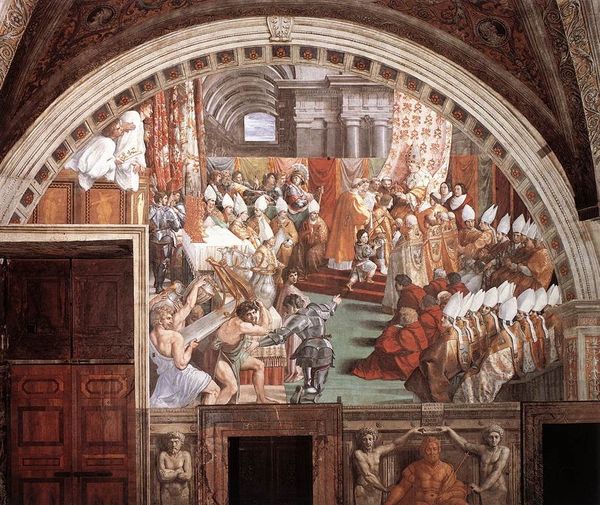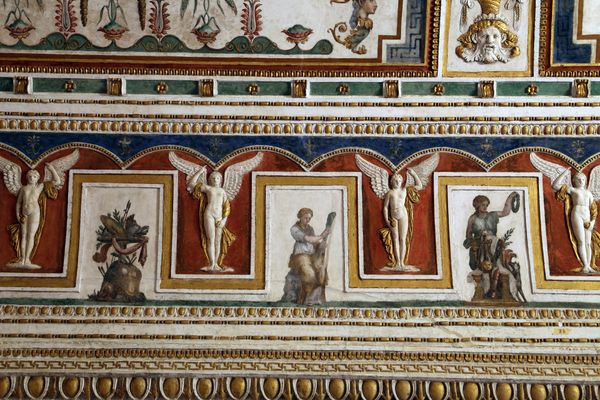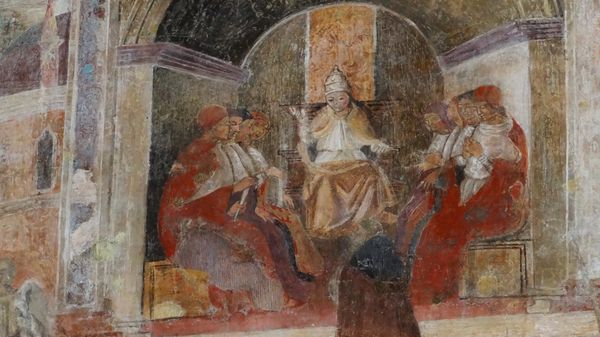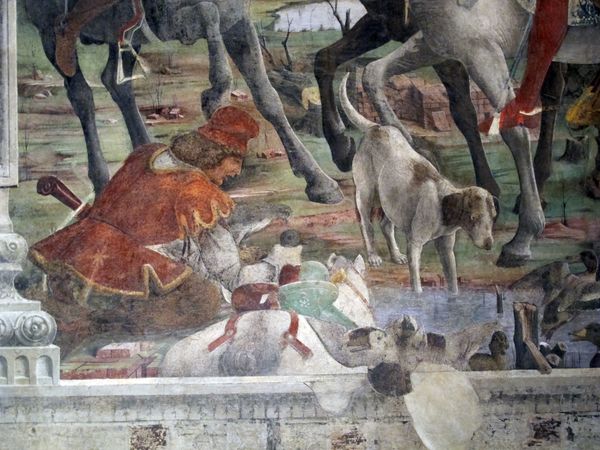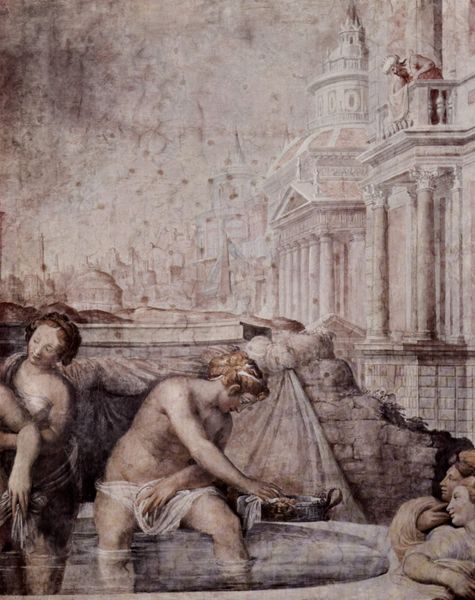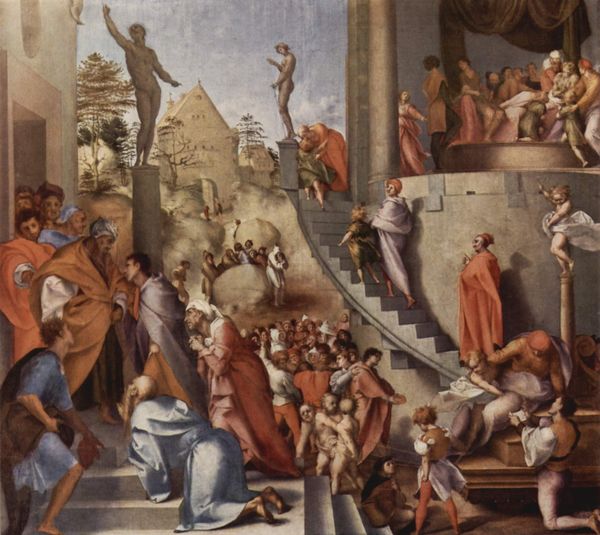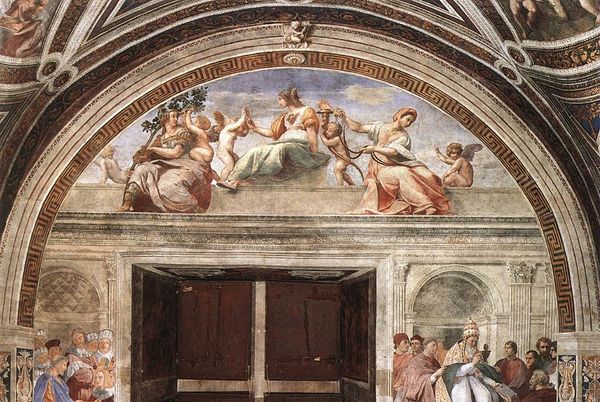
fresco
#
narrative-art
#
landscape
#
painted
#
figuration
#
fresco
#
cityscape
#
genre-painting
#
italian-renaissance
Copyright: Public domain
Curator: What immediately strikes me about this detail from Francesco del Cossa's fresco, "April," part of the larger cycle in the Palazzo Schifanoia dating to 1470, is the sheer vibrancy of daily life it captures. Editor: The frenetic energy is amazing! The texture and composition also suggest a really intense engagement with physical labor—how that was depicted at the time, and what materials would convey it best. I’m also taken by the earthy hues, it feels so grounded. Curator: Yes, and observe how those hues contribute to the layered symbolic meaning. We have classically inspired architecture bordering a somewhat chaotic race. Does it symbolize reason versus primal impulse, or perhaps celebrate athletic competition through the humanistic lens of antiquity? Note too the horseman above, seemingly uninvolved. Editor: It makes you think about the accessibility of such spectacles, and how social class would determine who gets to spectate. And consider the practical elements involved: What kind of pigments would yield that particular range of reds and browns in a fresco? Where were they sourced? The very physicality of applying paint to wet plaster over time! Curator: A very practical question indeed. Consider the figures engaged in the foot race, how their movements communicate the ethos of that period, but also reflect our basic desire for glory, translated here through the social theater of public games and competition. The figures here represent the dynamism of social mobility that marks a transitional phase. Editor: It highlights how the conditions of labor—making art but also performing these tasks or games depicted—shaped individual realities and also defined artistic representation. And now looking closely at those archways—it does make one ponder how artists then viewed materials and resources in an era with different constraints from our own! Curator: Thinking through those constraints is key, certainly. What’s incredible here, for me, is seeing how cultural memory, competition, and status were visualized in civic art during the early Renaissance. Editor: Exactly, by considering the making of "April," its materiality becomes a potent key for unlocking cultural understanding!
Comments
No comments
Be the first to comment and join the conversation on the ultimate creative platform.
